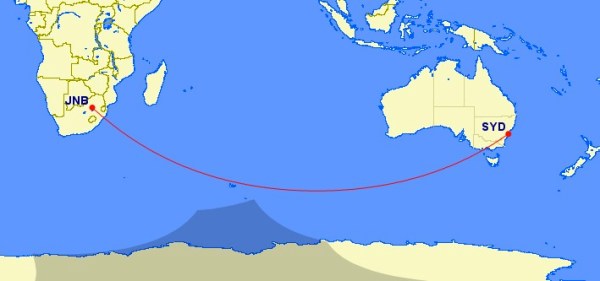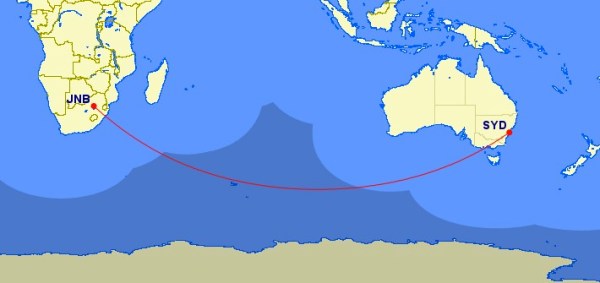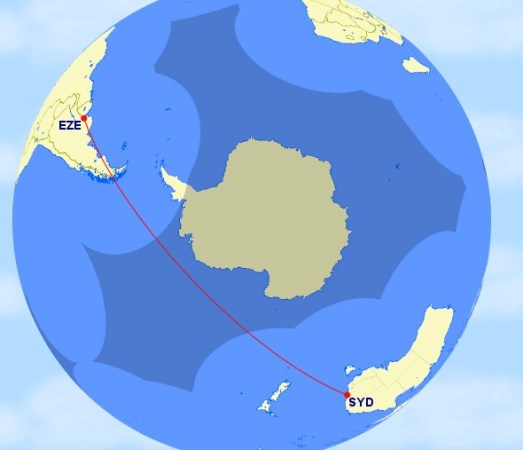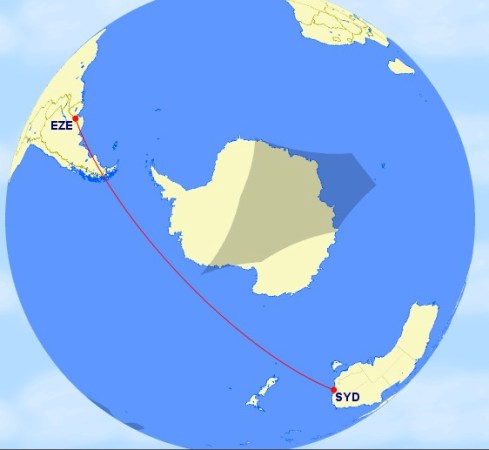Boeing has been given design type approval to offer airlines flying its 777 models up to 330 minutes extended range or ETOPS operations, straightening out of most of the routes that are currently bent by the restrictions that mean twin engined airliners most not fly further from a diversionary or emergency airfield than 180 minutes at single engine speed.
In theory this means Qantas, for example, could fly non-stop between Sydney and Buenos Aires or Johannesburg in a 777, without the need to flight plan to conform to the ETOPS restriction of 180 minutes in a twin engined jet, and only have to fly around a very small area of the Pacific if it ever became serious about non-stop flights to Dallas Fort Worth or New York in a jet that could actually do such routes reliably.
Which of course means this advance is totally useless to Qantas, as it has no 777s, has no plans to acquire 777s, and does the Buenos Aires and Johannesburg routes with aging inefficient 747s that fly just as straight as the twin engined jet, but burn more fuel and maintenance dollars because they are aged airframes from an earlier era.
By 2021 Qantas plans to fly only A380s, and is dropping Buenos Aires in favor of developing a Santiago hub with LAN Chile next year. The A380 with its four engines is a very useful jet out of hot, high Johannesburg Airport, which triggers restrictions on some long range twin engined operations related to what happens, or more to the point, mustn’t happen, if one of them experienced an engine failure at a critical point on departure.
And maybe the route will grow large enough to support A380s.
However the sad thing about Qantas and this announcement is that if it had 777-300ERs today it could use them to replace the remaining 747s in it fleet, and save a bundle on fuel and maintenance costs, and fly the straighter routes across the Indian and Pacific Oceans.
Boeing has just made the 777s flown by Qantas competitors an even better airliner, giving them advantages they will use to speed up management’s apparent agenda to turn Qantas into a token flag carrier by 2021.


Out of academic interest, the graphics in this report compare the optimum great circle routes between Sydney and Johannesburg or Buenos Aires under the 330 minute ETOPS rule with the restrictions under ETOPS 180. They do not factor in the daily reality of weather planning for those routes, which experience severe westerly headwinds.

In the future there is no doubting that ETOPS 330 will also apply to longer range versions of the Boeing 787 and Airbus A350 families. This means that on these routes Qantas will eventually be vulnerable to competition from operators with such twin engined jets that would not need to go upscale to an A380, or a Boeing 747-I, in order to eat its lunch.








Crikey is committed to hosting lively discussions. Help us keep the conversation useful, interesting and welcoming. We aim to publish comments quickly in the interest of promoting robust conversation, but we’re a small team and we deploy filters to protect against legal risk. Occasionally your comment may be held up while we review, but we’re working as fast as we can to keep the conversation rolling.
The Crikey comment section is members-only content. Please subscribe to leave a comment.
The Crikey comment section is members-only content. Please login to leave a comment.